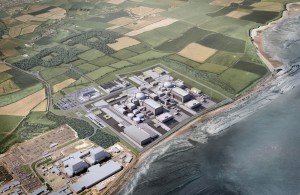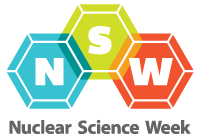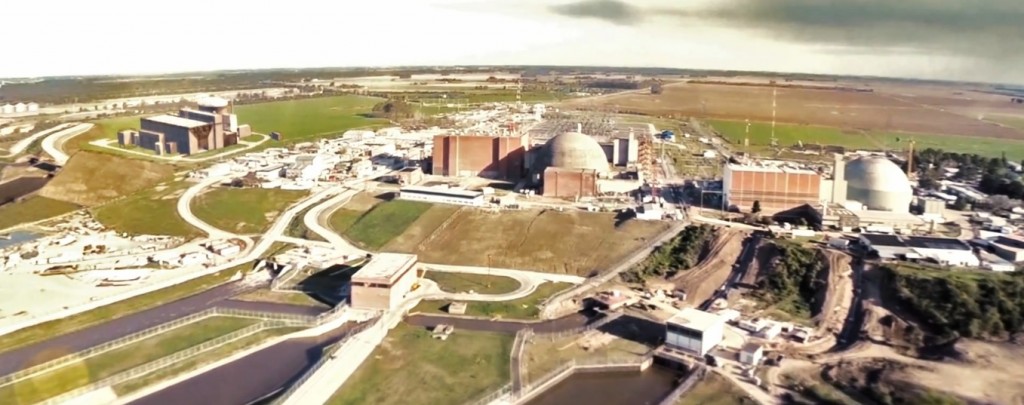Nuclear Energy Blog Carnival 233
 The 233rd Nuclear Energy Blog Carnival has been posted at Next Big Future.
The 233rd Nuclear Energy Blog Carnival has been posted at Next Big Future.

A message from Goodway
Dry Ice Blasting: A Game-Changer for Safe Cleaning and Decontamination in Nuclear Power Plants
 The 233rd Nuclear Energy Blog Carnival has been posted at Next Big Future.
The 233rd Nuclear Energy Blog Carnival has been posted at Next Big Future.

Hinkley Point C - conceptual view. ©EDF
by Jim Hopf
 The 232nd Nuclear Energy Blog Carnival has been posted at The Hiroshima Syndrome.
The 232nd Nuclear Energy Blog Carnival has been posted at The Hiroshima Syndrome.
 The fifth and final day of Nuclear Science Week is all about Nuclear Medicine. Have you ever experienced a procedure at a hospital that employed radiation? Did you know that there are actually many different ways that nuclear technology is employed in medicine-and not just at your local hospitals?
The fifth and final day of Nuclear Science Week is all about Nuclear Medicine. Have you ever experienced a procedure at a hospital that employed radiation? Did you know that there are actually many different ways that nuclear technology is employed in medicine-and not just at your local hospitals?
 Day 4 of the annual National Nuclear Science week is all about Nuclear Safety.
Day 4 of the annual National Nuclear Science week is all about Nuclear Safety.
 The third day of National Nuclear Science Week is focused upon the production of energy by nuclear means-and that means energy that can do work for man. Electric power, steam for heating businesses and homes, and mechanical power for propelling ships are perhaps the best known examples of man's use of nuclear energy.
The third day of National Nuclear Science Week is focused upon the production of energy by nuclear means-and that means energy that can do work for man. Electric power, steam for heating businesses and homes, and mechanical power for propelling ships are perhaps the best known examples of man's use of nuclear energy.
 The second day of National Nuclear Science Week promotes the knowledge of careers in nuclear-related fields.
The second day of National Nuclear Science Week promotes the knowledge of careers in nuclear-related fields.
 Monday, October 20, marks the first official day of National Nuclear Science Week-a week long, annual coordinated educational event that promotes nuclear science and technology.
Monday, October 20, marks the first official day of National Nuclear Science Week-a week long, annual coordinated educational event that promotes nuclear science and technology.
• What - American Nuclear Society Winter Meeting 2014
This past week, a remarkable article was printed in The Atlantic, which gave a full first-person account of the initial trial run of the STR Mark I nuclear prototype plant-the plant that paved the way for the success of the first nuclear powered vessel ever built, the submarine USS NAUTILUS.
 The 229th Nuclear Energy Blog Carnival has been posted at Next Big Future.
The 229th Nuclear Energy Blog Carnival has been posted at Next Big Future.
Preface: Robert Rock, a Canadian professional who authored the post you're about to read, is relatively new to the field of nuclear communications but isn't new to communications overall. I believe it's good to get outside perspectives once in a while-they make us think about and reflect upon our own actions. I hope that his piece, specifically written for us here at ANS Nuclear Cafe, can provoke some discussion and help us develop new perspective. Your Editor, Will Davis.
I've been listening to an evangelical group of molten salt reactor enthusiasts for several years. Their pitch is attractive and they often make good arguments about the value of rethinking the light water reactor technology model, but most of the participants are unrealistic about the economic, material, technical, and regulatory barriers that their concepts must overcome before they can serve market needs.
Shortly before midnight on September 26, 1944, a sustained chain reaction was begun for the first time in a nuclear reactor whose purpose was not merely to prove that fission could be achieved or sustained. The brand new reactor at Hanford Engineer Works, Washington state, had only been complete for about a month; its first uranium fuel had begun loading only on September 13. Incredibly, this facility, of a nature that had never been attempted before (as man had only been aware of fission, itself, for less than a decade) was built in the incredible time span of 11 months; ground had been broken to build the reactor building in October 1943.

Atucha I and II at right; artist's concept of Atucha III at left. RIght-most unit is Atucha I. Courtesy Nucleoelectrica Argentina S.A.
Nucleoelectrica Argentina S.A. announced in July that it had entered into a contract with China National Nuclear Corporation to build a Chinese-sourced version of the traditional Canadian CANDU reactor at its Atucha site. This 800-MWe plant will be the fourth at the site (already occupied by two Siemens pressurized heavy water reactor plants, and the just-begun CAREM Small Modular Reactor plant) and the nation's fifth nuclear plant overall (adding in the CANDU plant at Embalse.) This new unit will be Argentina's most powerful nuclear unit, topping Embalse by 200 MWe.
 The 227th Carnival of Nuclear Bloggers and Authors has been published at The Hiroshima Syndrome.
The 227th Carnival of Nuclear Bloggers and Authors has been published at The Hiroshima Syndrome.
• This week the GE-Hitachi ESBWR design received its Design Certification from the Nuclear Regulatory Commission.